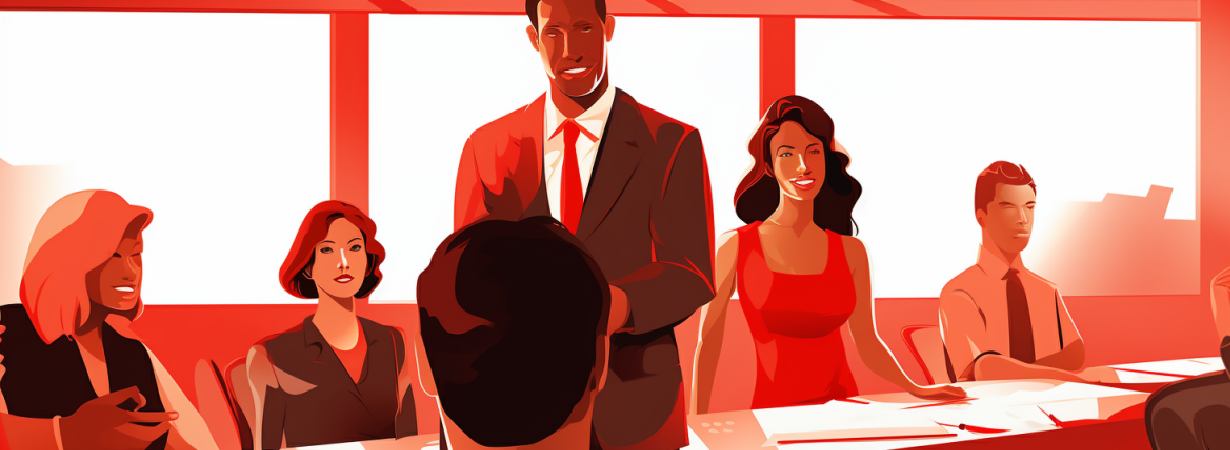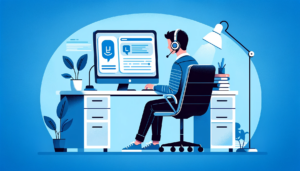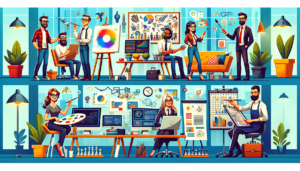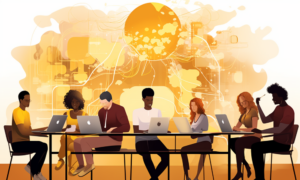Why aren’t learning leaders delivering the continuous L&D their employees need?
- 7 Min Read
Reliance on traditional practices, outdated software, and one-size-fits-all learning derail the personalized and continuous L&D employees need to keep up to pace with change. What can HR and L&D leaders do?
- Author: Benjamin Broomfield
- Date published: Nov 24, 2023
- Categories

It’s become common practice for articles about HR and the organization to start with some variation of ‘In this unprecedented period of change’ or ‘In an increasingly complex business environment.’ Unoriginality aside, we may take it for granted that change is the only constant in our organizations and think about what this means for our learning & development programs.
This raises the question of whether our traditional learning programs can keep pace with this rate change. Another dip into the HR analysis archives tells us they do not. L&D is still too “formal, structured, and scheduled.” Tupper and Ellis’ observations confirm that although HR paradigms like Josh Bersin’s “learning in the flow of work” are elegant in theory, most organizations do not or cannot implement them in practice. Another HR operating model bites the dust?
The reality is that HR and L&D leaders still face barriers to continuous L&D. When employees fall behind as a result, they become frustrated and disengaged. Let’s consider the three main factors that render organizations unable to deliver continuous L&D at the speed that ‘unprecedented change’ requires, and how we can overcome them.
1. We’d rather stick to traditional L&D, it’s what we know!
Devouring fish and chips on a British summer holiday to the beach. Breaking the wishbone at a Thanksgiving feast. Traditions often (and rightly) have a special place in our hearts. But some traditions must be replaced, and traditional learning programs are no longer able to meet business requirements.
Katja Schipperheijn, Founder of Habit of Improvement, is an advocate for this move. “To stay current, one should adopt a lean approach to learning,” she argues. “This entails eliminating any unnecessary elements – waste – that do not contribute to the efficiency and effectiveness of applicable learning, ultimately enhancing performance.”
Schipperheijn offers further insight into the meaning of waste in the context of training: “In conventional training, there is often a significant delay between the demand for “training” or knowledge transfer and its actual implementation. This delay exemplifies inefficiency and, consequently, constitutes waste. Another form of waste in the realm of learning is the knowledge employees possess that they do not share with others who could benefit from it.”
Organizations, Schipperheijn concludes, must instead turn to continuous L&D, “which involves providing relevant and applicable knowledge and skills when needed, all roles and industries experience advantages.” By using concepts such as L&D sprints and Lean Learning Development, alongside modern intelligent systems like Social Learning Platforms, HR and L&D leaders can best help employees embrace continuous learning.
2. Our LMS can’t meet our continuous L&D needs!
Ah, our old friend HR Tech. How often do you come away from a conference with huge plans to uproot your approach to HR or L&D, only for the limitations of your current platforms to bring you back down to earth with a bump?

The most common complaints are as follows: One, our current LMS is too clunky. Two, it’s too long until our vendor partnership is up for renewal. Three, it’s too expensive to acquire a new platform.
These are all valid frustrations. Let’s walk some practical steps for each.
- Talk to your current vendor AND possible alternatives. They’ll no doubt be aware that if they cannot deliver the continuous, integrated L&D your workforce needs, there’s a host of platforms waiting in the wings when it’s time for renewal. If you’re at the point of renewal, it is now non-negotiable to ask each provider you speak with how their platform is tackling the problem of consistent training at speed and scale. Ask for case studies from organizations with similar learning needs to yours.
- Again, talk to your current vendor AND possible alternatives. Josh Bersin’s three categories of AI solutions tell us nearly every large-scale HR Tech vendor has ‘AI added on’ or ‘AI built-in’. Whilst he argues these aren’t as valuable as software that is ‘built on AI,’ it is inevitable your vendor has upgraded or is upgrading its platform. This could well include a fix for increasing the speed at which you deliver L&D. And even if your contract isn’t up for renewal just yet, having an understanding of what solutions do exist on the market can give you leverage with your existing provider. I’m sure you’ll find any BDR or SaaS salesperson more than willing to chat.
- Talk to your CFO. Take your pick as to what research or study you choose to demonstrate the business cost of ineffective L&D. But before you do, speak to your CFO. What are the KPIs they will be reporting on that quarter or financial year? Then, when you begin the procurement process, select the study that shows why a continuous L&D platform is a non-negotiable for helping them reach their goal.
3. Because of our scale, a one-size-fits-all approach is just easier!
Picture a VP of Learning proudly reporting to their CHRO on the roll-out of a new micro-learning platform. Every employee can now log on and pick out the content relevant to them. They can consume it whenever they like. In theory, that sounds like the informal and unstructured type of L&D that engages employees to stay up to date with the latest training.
Now consider the software engineers in that workforce who are simply too busy to visit the platform. Think about the FDs who would prefer a structured session on compliance. And what about the employees who best learn about complex topics like inclusion through in-person actor-based learning?
Many organizations still fall foul of mandatory training programs – see Slack standing down all business operations for a week. True personalization means offering learning that is both structured and unstructured, individual and group-based, theoretical and practical, and everything in between. In short, whatever your people need.
They might tell you this directly through employee feedback cycles. But also remember that people analytics should remain a consistent input into all decision-making processes and can inform you how each employee learns best.
What good is delivering L&D at the right speed and scale if it doesn’t engage your employees?
Avoiding waste and disengagement with fast-paced, continuous L&D
It’s been a long, exhausting year for HR and L&D leaders. It’s hard to believe in the past twelve months we’ve moved from ChatGPT’s debut to GPT4. And that’s just AI. Keeping up to date with myriad internal and external changes is hard enough for the individual, let alone a global organization with thousands of employees.
2024 will be no different. Although misguided in its execution, L&D leaders can learn from Slack’s drastic action: Long-term goals around business operations must begin with a focus on learning. Employees of all generations, but especially Gen Z, expect better career development. Organizations like Kraft Heinz that lead the pack are reaping the rewards of talent attraction, retention, employee engagement, and innovation.
It is up to HR and L&D leaders to demonstrate to organization leaders that delivering continuous L&D at speed is a business priority. By doing so, they can gather the buy-in and resources to achieve it in practice.








